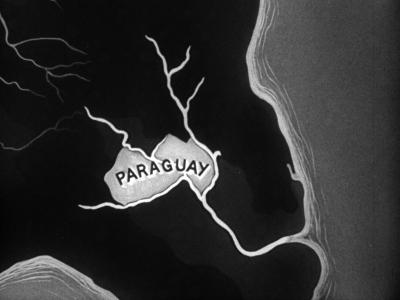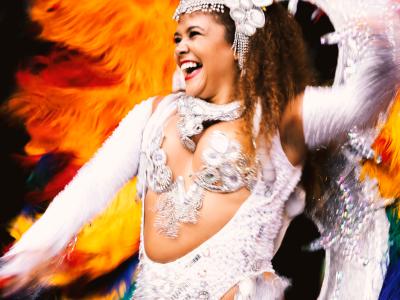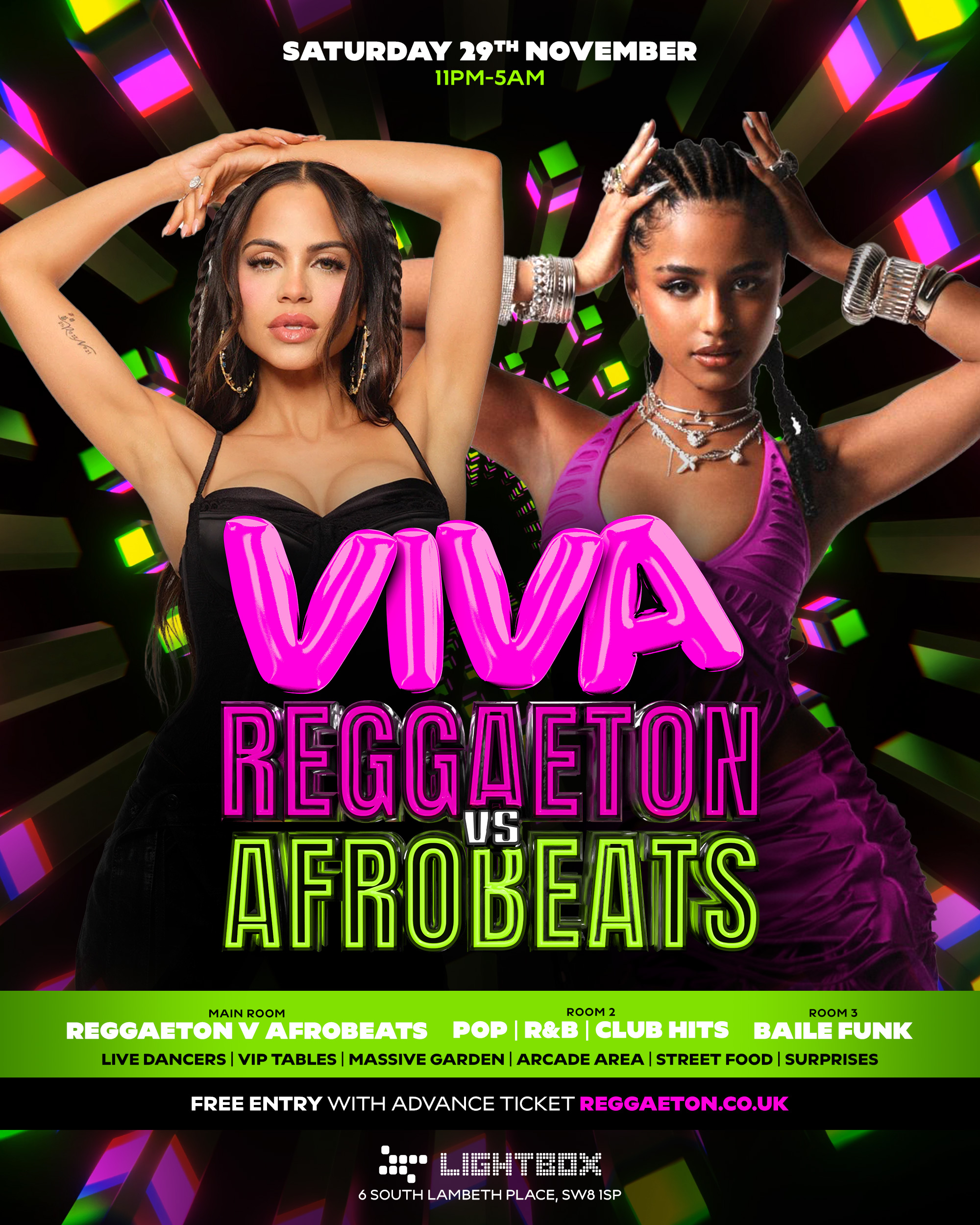At La Bodeguita Restaurant in Elephant and Castle, a group of chattering young adults enter and locate a table by a window flooded with sunshine. Behind them, a billboard outside depicting a Caribbean beach flanked by palm trees before turquoise water and a bright blue sky creates a tropical illusion in dreary London.
The ebullient group tuck into an array of rich Colombian tapas of chorizo, arepas, empanadas and aborrajados, speaking Spanish between mouthfuls and laughter. It is a mixed group of negros, blancos, mestizos, guys and girls. While all members are Latinos, would anyone at the table describe him or herself as Afro Latino? At what point in the color spectrum would one be considered as such? And what does the term mean anyway?
The prefix Afro is just as multifaceted as the term Latino. During the late 19th and early 20th century, modern Pan-Africanism – an ideology and philosophy - set its gaze in the direction of African descendants abroad, in an effort to engender unity. Scattered across far-flung points of the globe, they would feel bonded by principles of unity, self-reliance, anti-colonialism, abolishment of slavery, the preservation of African traditions, intellectual advancement, political efficacy, a shared history and a shared future. While the origins of Pan-Africanism lie in the African continent, its popularization emerged from the Caribbean and American diaspora. By the 1920s, movements like Négritude and the Harlem Renaissance fused black internationalism with music, literature and art.
Meanwhile, during the same period in the Caribbean, the Race War of 1912 in Cuba inspired an intellectual, aesthetic and political awakening among the black population that was dubbed Afrocubanismo. The movement paralleled Pan-Africanism and forever changed the island’s national consciousness, lending legitimacy to Cuba’s African heritage. The bewitching Cuban son, the poetry of Nicolás Guillen, the paintings of Wilfredo Lam, the novels of Alejo Carpentier, the musical theatre of Ernesto Lecuona, and habanero rhythms were artistic expressions of this newer, more fluid national identity.
 Cuban painter Wilfredo Lam
Cuban painter Wilfredo Lam
Like Cuba, countries throughout Latin America grappled with the history of slavery and its effect on national identity. Attempts to ‘breed out’ blackness engendered antiracist protests, political shifts and new cultural expressions inclusive of African heritage. Ties between the African diaspora and African nations strengthened with continued practice of African heritage traditions in Latin America, such as in the religion of santería. During the 1980s and 1990s, as the diaspora responded to the call of Africa and mobilized in anti-Apartheid protests, the prefix ‘Afro’ began to take root in Latin America with terms like ‘Afro-Brazilian’, ‘Afro-Peruvian’ and Afroecuatoriano. They became a way to represent a minority, or in Brazil’s case half the population, in a unified acknowledgement of a distinct version of Latinidad—an experience of being both of African descendant and Brazilian, or Colombian, or Ecuadorian or Venezuelan.
Of course the term Latino contains its own complexities, including the issue of which countries are considered Latin American. The 1970 U.S. census showed, for the first time, ethnicity options ‘Central or South American, Mexican, Puerto Rican, Cuban, Other Spanish’, which indicates a noted migration to the U.S. by Spanish-speaking people. The 1990 census displays the term Hispanic for the first time and the 2000 census displays the term Latino for the first time. Yet do Brazilians, Haitians and other non-Spanish speaking South Americans consider themselves Latinos?
 Brazilian singer Gilberto Gil
Brazilian singer Gilberto Gil
Quantifying Latinos is no easy task. In the UK, the Latino option or any versions of such do not appear at all on official forms or in the census. Southwark became the first council to offer Latin American as an ethnicity in its forms and the community is campaigning to replicate this.
Yet, in a study carried out by Queen Mary University of London.“No Longer Invisible: The Latin American Community in London” only 17% of those participating in the study chose ‘Latin American’ as an ethnicity option. Other options included white, mestizo and African descent. In the study, 27.8% identified as white, 41.3% identified as mestizo and 2% identified as African descendant. If Brazilians make up the largest portion of Latinos in the UK, and half of Brazil’s total population are Afrodescendientes to varying degrees, then it is quite interesting that only 2% of the Latino population in the UK identify themselves as being of African descent.
 Ballet dancer Carlos Acosta
Ballet dancer Carlos Acosta
To properly quantify Afro Latinos, surely Latinos must first self-identify with being of African descent. Back in La Bodeguita, a young man in the group recounts his story of migration from the Dominican Republic to Spain and then to the UK. Work and sleep are his primary activities and when he has time to meet with friends he says that Elephant and Castle is the place to be for Latinos in London. While he doesn’t have time to engage in nightlife, he says this is where they come to dance and eat and just hang out. When the topic turns to Afro Latinos, he asks, “What’s that?”
After an explanation of the term Afro Latino, the young man insists that he does not identify with that term and that he, though having a dark complexion, does not see himself as a descendant of Africa and would only subscribe to Dominican as a descriptor for ethnicity and personal identity. Perhaps the term Afro Latino is still stuck in academia and has not made its way throughout the diaspora, or perhaps the young man is exerting a willful resistance to acknowledging African heritage.
While Latin American countries may own distinct versions of Afrodescendencia, the term Afro Latino is nascent and most frequently used in the U.S. to describe an inter-sectionality, where being Latino, black and bilingual converge into an experience that has historically been overlooked by society and the media.
As more and more Afrodescendientes identify themselves as Afro Latinos, particularly in the U.S., there seems to be a new connectivity between young Latinos and African Americans, who can relate to each others’ struggles, particularly around areas such as inequality and policing.

Afro Latinos, like non-white people in the Americas and the UK, also experience a commonality in their seeming underrepresentation in media and entertainment. Broadcast companies such as Univision and Telemundo are historically notorious for excluding black faces in their programing, where all-white casts often make up telenovelas and news teams. Publications such as Vanidades almost never feature Afro Latinos. The exclusion has inspired Afro Latinos to use the digital realm as a means of connecting with the African diaspora, where they can celebrate African heritage.
All across the Americas, efforts to preserve African heritage continue to defy whitewashing and lack of representation. One can still find botanicas in the Bronx. Capoeira and candomble still abound in Brazil. The Garífuna people of Honduras, Belize, Guatemala and Nicaragua continue to protect their communities and language against the continued threat of assimilation and displacement. The Afro Ecuadorians, or Choteños, continue to dance bomba, a hybrid of Spanish and African music. In Barolvento, Venezuela, water drums are played in the river only by the hands of women. And in London, the Cuban School of Arts continues to teach traditional Orisha, Arara and Palo dance.
Whether you consider yourself Afro Latino or not, if you ever find yourself bochinchando with your asere, picking the best looking guineos, platanos or ñame for dinner, dancing merengue, ordering a big plate of feijoada, or simply enjoying a cup of café in the morning, then you have indeed indulged in a bit of your African heritage. All that is left now is to acknowledge it.

















